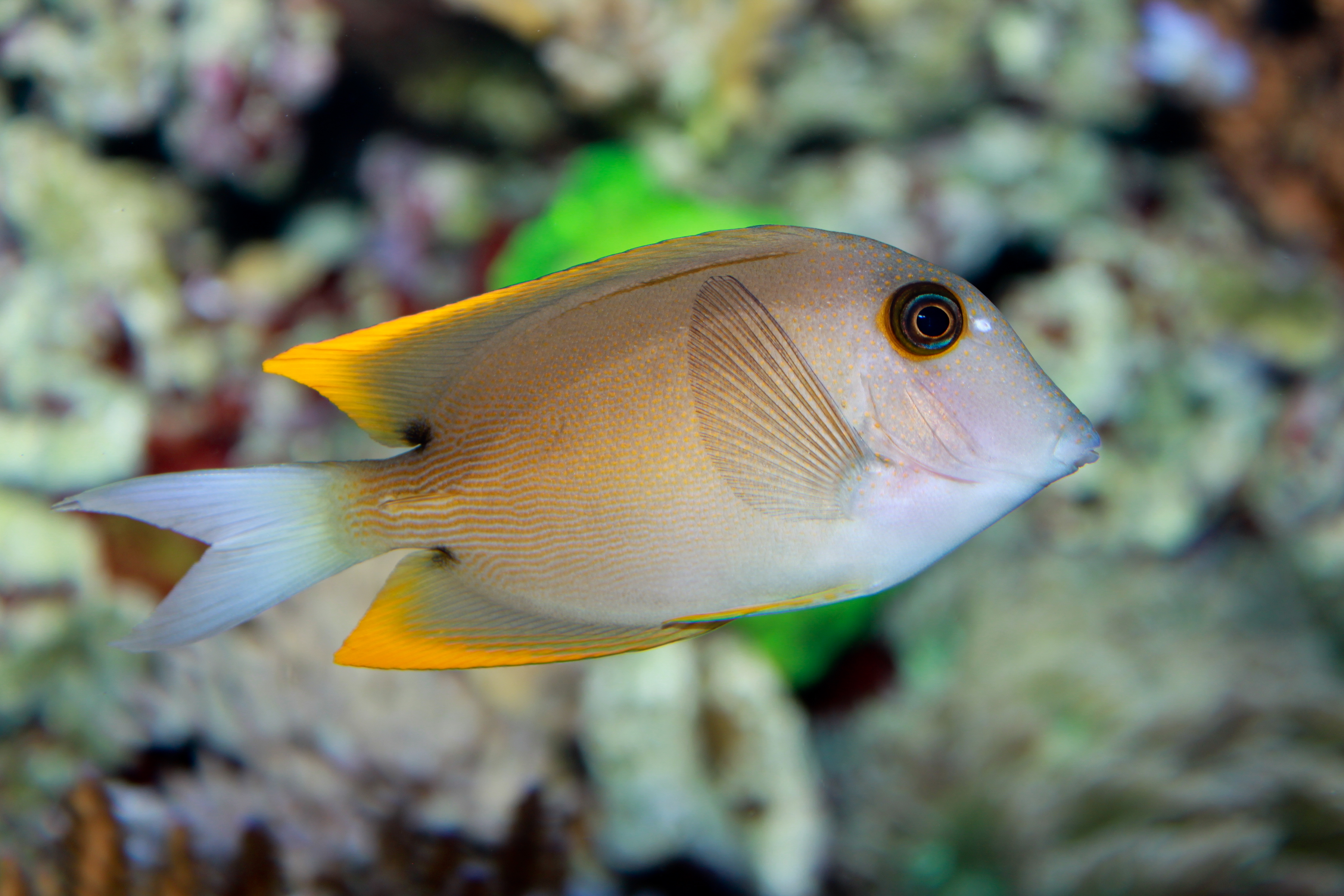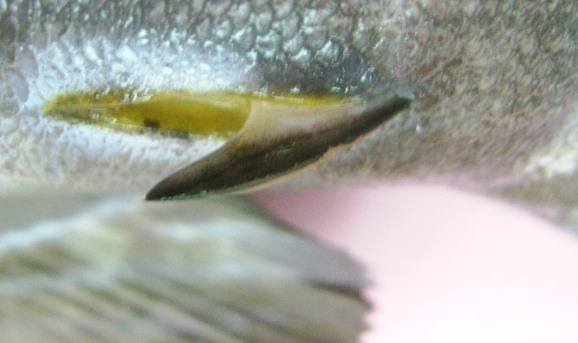|
Acanthurini
Acanthurini is a tribe of marine ray-finned fishes belonging to the family Acanthuridae and it is one of three tribes in the subfamily Acanthurinae. Taxonomy Acanthurini was first proposed as a taxon in 1839 by the French naturalist Charles Lucien Bonaparte and in 1993 it was delineated by the American ichthyologist Richard Winterbottom as consisting of the two genera ''Acanthurus'' and ''Ctaenochaetus'', alongside the monotypic tribe Prionurini and with the remaining two Acanthurine genera, '' Zebrasoma'' and ''Paracanthurus'', being classified in the tribe Zebrasomini. These tribes make up the subfamily Acanthurinae which with the subfamily Nasinae make up the family Acanthuridae. Genera There are two genera within the tribe Acanthurini: * ''Acanthurus'' Forsskål 1775 * ''Ctenochaetus'' Gill A gill () is a respiration organ, respiratory organ that many aquatic ecosystem, aquatic organisms use to extract dissolved oxygen from water and to excrete carbon dioxide. The gills ... [...More Info...] [...Related Items...] OR: [Wikipedia] [Google] [Baidu] |
Acanthurinae
''Acanthurinae'' is a subfamily of marine ray-finned fishes belonging to the Family (biology), family Acanthuridae, found in the Indo-Pacific and the tropical Atlantic. These fishes commonly have the English names surgeonfishes or tangs. Taxonomy Acanthurinae is the nominate subfamily of the family Acanthuridae which was proposed by the French zoologist Charles Lucien Bonaparte in 1835. The 5th edition of ''Fishes of the World'' recognises 3 Tribe (biology), tribes within the subfamily, the Acanthurini, Prionurini and Zebrasomoni. The other subfamily in the Acanthuridae is the monogeneric Nasinae. Tribes and genera Acanthurinae is subdivided into the following tribes and genera: ''FishBase'' list 57 species in the subfamily, with ''Acanthurus'' containing 40 species being the most speciose genus. Characteristics Acanthurini surgeonfishes are characterised by having 3 spines in the anal fin. They also have one or more mobile and flexible spine on the caudal peduncle, this spin ... [...More Info...] [...Related Items...] OR: [Wikipedia] [Google] [Baidu] |
Ctenochaetus
''Ctenochaetus'', or bristletooth tangs, is a genus of marine ray-finned fish belonging to the family Acanthuridae, which includes the surgeonfishes, unicornfishes and tangs. These fishes are found in the Indo-Pacific region. They have many, small flexible teeth and some species have the common name bristletooth. Taxonomy ''Ctenochaetus'' was first proposed as a genus in 1884 by the American biologist Theodore Gill with ''Acanthurus strigosus'' as its type species. ''A. strigosus'' had originally been described in 1828 by Edward Turner Bennett from the Sandwich Islands. Paraphyly It has been proposed that this genus and ''Acanthurus'' should be merged as otherwise ''Acanthurus'' is paraphyletic. ''Ctenochaetus'' species all nest within ''Acanthurus'', while '' A. nubilis'' and '' A. pyroferus'' are furthermore nested within ''Ctenochaetus''. The 5th edition of ''Fishes of the World'' recognises these two genera as valid and classifies them as the two genera in the tribe Acan ... [...More Info...] [...Related Items...] OR: [Wikipedia] [Google] [Baidu] |
Acanthurus
''Acanthurus'' is a genus of marine ray-finned fish belonging to the family Acanthuridae, which includes the surgeonfishes, unicornfishes and tangs, found in the Atlantic, Indian and Pacific Ocean. They are found in tropical oceans, especially near coral reefs, with most species in the Indo-Pacific but a few are found in the Atlantic Ocean. As other members of the family, they have a pair of spines, one on either side of the base of the tail which are dangerously sharp. Taxonomy ''Acanthurus'' was first proposed as a subgenus of ''Chaetodon'' in 1775 by the Swedish-speaking Finnish explorer, orientalist and naturalist Peter Forsskål, although he recognised that it was probably different from ''Chaetodon'' even at the family level. In 1856 Desmarest designated ''Teuthis hepatus'', which had been described from a type now known to have been collected at Ambon Island in the Moluccas (other erroneous type localities were named) in 1758 by Linnaeus, as the type species of the ... [...More Info...] [...Related Items...] OR: [Wikipedia] [Google] [Baidu] |
Zebrasomini
Zebrasomini is a tribe of marine ray-finned fishes belonging to the family Acanthuridae and it is one of three tribes in the subfamily Acanthurinae. Taxonomy Zebrasomini was first proposed as a taxon in 1933 by American ichthyologist Richard Winterbottom, Winterbottom delineated it as consisting of the two genera ''Zebrasomus'' and ''Paracanthurus'', alongside the monotypic tribe Prionurini and with the remaining two Acanthurine genera, ''Acanthurus'' and ''Ctenochaetus'', being classified in the tribe Acanthurini. These tribes make up the subfamily Acanthurinae which with the subfamily Nasinae make up the family Acanthuridae. Genera There are two genera within the tribe Zebrasomini: * ''Paracanthurus'' Bleeker, 1863 * '' Zebrasoma'' Swainson, 1839 Characteristics The Zebrasomini was defined by Winterbottom using similarities in the osteology of the skull between the two genera and in comparison to the other two Acanthurine tribes, they also have no scales on their larvae. W ... [...More Info...] [...Related Items...] OR: [Wikipedia] [Google] [Baidu] |
Ctenochaetus Strigosus
''Ctenochaetus strigosus'', the kole tang, spotted bristletooth, spotted surgeonfish, goldring bristletooth, goldring surgeonfish, yelloweye tang or yellow-eyed surgeonfish, is a species of marine ray-finned fish belonging to family Acanthuridae which includes the surgeonfishes, unicornfishes and tangs. This fish is endemic to Hawaii. Taxonomy ''Ctenochaetus strigosus'' was first formally described in 1828 as ''Acanthurus strigosus'' by the English zoologist Edward Turner Bennett with its type locality given as the Sandwich Islands. In 1884 Theodore Gill classified ''A. strigosus'' in the new monospecific genus ''Ctenochaetus'', meaning that it is the type species of that genus by monotypy. The genera ''Ctenochaetus'' and ''Acanthurus'' make up the tribe Acanthurini which is one of three tribes in the subfamily Acanthurinae which is one of two subfamilies in the family Acanthuridae. Etymology ''Ctenochaetus strigosus'' has the specific name ''strigosus'', meaning "slender", p ... [...More Info...] [...Related Items...] OR: [Wikipedia] [Google] [Baidu] |
Acanthurus Lineatus
''Acanthurus lineatus'', the lined surgeonfish, blue banded surgeonfish, blue-lined surgeonfish (a name also used for '' Acanthurus nigroris'' and '' Acanthurus mata''), clown surgeonfish, pyjama tang, striped surgeonfish, and zebra surgeonfish, is a species of marine ray-finned fish belonging to the family Acanthuridae, the surgeonfishes, unicornfishes and tangs. This species is found in the Indo-Pacific region. Taxonomy ''Acanthurus lineatus'' was first formally described as ''Chaetodon lineatus'' by Linnaeus in the 10th edition of Systema Naturae published in 1758 with its type locality given as "Indies". The genus ''Acanthurus'' is one of two genera in the tribe Acanthurini which is one of three tribes in the subfamily Acanthurinae which is one of two subfamilies in the family Acanthuridae. Etymology ''Acanthurus lineatus'' has the specific name ''lineatus'', meaning "lined", a reference to the yellow and black lines on the body of this fish. Description This species r ... [...More Info...] [...Related Items...] OR: [Wikipedia] [Google] [Baidu] |
Acanthuridae
Acanthuridae are a family of ray-finned fish which includes surgeonfishes, tangs, and unicornfishes. The family includes about 86 extant species of marine fish living in tropical seas, usually around coral reefs. Many of the species are brightly colored and popular in aquaria. Etymology and taxonomic history The name of the family is derived from the Greek words ''akantha'' and ''oura'', which loosely translate to "thorn" and "tail", respectively. This refers to the distinguishing characteristic of the family, the "scalpel" found on the caudal peduncle. In the early 1900s, the family was called Hepatidae. Subfamilies and genera Acanthuridae contains the following extant subfamilies and genera: * Subfamily Nasinae Fowler & Bean, 1929 ** Genus '' Naso'' Lacépède, 1801 * Subfamily Acanthurinae Bonaparte, 1835 ** Tribe Acanthurini Bonaparte, 1839 *** Genus '' Acanthurus'' Forsskål 1775 *** Genus '' Ctenochaetus'' Gill, 1884 ** Tribe Prionurini J. L. B. Smith, 1966 ** ... [...More Info...] [...Related Items...] OR: [Wikipedia] [Google] [Baidu] |
Tribe (biology)
In biology, a tribe is a taxonomic rank above genus, but below family and subfamily. It is sometimes subdivided into subtribes. By convention, all taxa ranked above species are capitalized, including both tribe and subtribe. In zoology, the standard ending for the name of a zoological tribe is "-ini". Examples include the tribes Caprini (goat-antelopes), Hominini (hominins), Bombini (bumblebees), and Thunnini (tunas). The tribe Hominini is divided into subtribes by some scientists; subtribe Hominina then comprises "humans". The standard ending for the name of a zoological subtribe is "-ina". In botany, the standard ending for the name of a botanical tribe is "-eae". Examples include the tribes Acalypheae and Hyacintheae. The tribe Hyacintheae is divided into subtribes, including the subtribe Massoniinae. The standard ending for the name of a botanical subtribe is "-inae". In bacteriology, the form of tribe names is as in botany, e.g., Pseudomonadeae, based on the ge ... [...More Info...] [...Related Items...] OR: [Wikipedia] [Google] [Baidu] |
Taxa Named By Charles Lucien Bonaparte
In biology, a taxon (back-formation from ''taxonomy''; : taxa) is a group of one or more populations of an organism or organisms seen by taxonomists to form a unit. Although neither is required, a taxon is usually known by a particular name and given a particular ranking, especially if and when it is accepted or becomes established. It is very common, however, for taxonomists to remain at odds over what belongs to a taxon and the criteria used for inclusion, especially in the context of rank-based (" Linnaean") nomenclature (much less so under phylogenetic nomenclature). If a taxon is given a formal scientific name, its use is then governed by one of the nomenclature codes specifying which scientific name is correct for a particular grouping. Initial attempts at classifying and ordering organisms (plants and animals) were presumably set forth in prehistoric times by hunter-gatherers, as suggested by the fairly sophisticated folk taxonomies. Much later, Aristotle, and later still ... [...More Info...] [...Related Items...] OR: [Wikipedia] [Google] [Baidu] |
Theodore Gill
Theodore Nicholas Gill (March 21, 1837 – September 25, 1914) was an American ichthyologist, mammalogist, malacologist, and librarian. Career Born and educated in New York City under private tutors, Gill early showed interest in natural history. He was associated with J. Carson Brevoort in the arrangement of the latter's entomological and ichthyological collections before going to Washington, DC, in 1863 to work at the Smithsonian Institution. He catalogued mammals, fishes, and mollusks most particularly, although he maintained proficiency in other orders of animals. He was librarian at the Smithsonian and also senior assistant to the Library of Congress. He was elected as a member of the American Philosophical Society in 1867. Gill was professor of zoology at George Washington University. He was also a member of the Megatherium Club at the Smithsonian Institution in Washington, DC. Fellow members frequently mocked him for his vanity. He was president of the American Asso ... [...More Info...] [...Related Items...] OR: [Wikipedia] [Google] [Baidu] |
Charles Lucien Bonaparte
Charles Lucien Jules Laurent Bonaparte, 2nd Prince of Canino and Musignano (24 May 1803 – 29 July 1857) was a French naturalist and ornithology, ornithologist, and a nephew of Napoleon. Lucien and his wife had twelve children, including Cardinal Lucien Bonaparte (cardinal), Lucien Bonaparte. Life and career Bonaparte was the son of Lucien Bonaparte and Alexandrine de Bleschamp. Lucien was a younger brother of Napoleon I of France, Napoleon I, making Charles the emperor’s nephew. Born in Paris, he was raised in Italy. On 29 June 1822, he married his cousin, Zénaïde Laetitia Julie Bonaparte, Zénaïde, in Brussels. Soon after the marriage, the couple left for Philadelphia in the United States to live with Zénaïde's father, Joseph Bonaparte (who was also the paternal uncle of Charles). Before leaving Italy, Charles had already discovered a Old World warbler, warbler new to science, the moustached warbler, and on the voyage he collected specimens of a new Wilson's storm-petrel ... [...More Info...] [...Related Items...] OR: [Wikipedia] [Google] [Baidu] |




